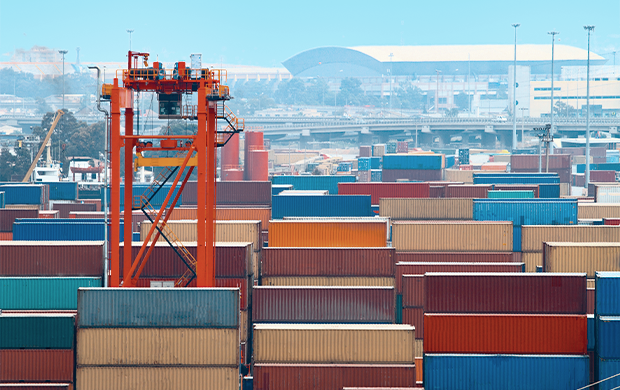The respite in box volumes has led to falling congestion and changes in global container flows according to the Container Availability Index.
The Container xChange index, which measures the ratio of weekly import to export flows at ports worldwide, shows that the share of imports from the total volumes handled at the ports of Los Angeles and Long Beach, the two largest gateways to the U.S., has fallen -10% compared to last year.
Bloomberg reported that the number of containerships in U.S. coastal waters has fallen to less than half of the count a year ago.
At China’s second-largest container port, Ningbo, the share of imported containers has remained the majority since late last year as demand for exports fell. This follows two years where exports outstripped empty returns and imports. More than 5m empty standard containers were stacked at ports across China in early February, double the number before the COVID-19 pandemic, according to data from Dalian Maritime University.
“Global shippers must now navigate in a tricky environment, as carriers still rely largely on blank sailings when they should close services outright,” Peter Sand, chief analyst at freight rate platform Xeneta. “We see 2023 as a year of excessive capacity management by the carriers,” Sand said, listing the likely order of defensive measures the lines
Source: splash247.com

